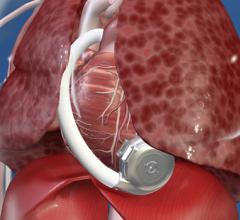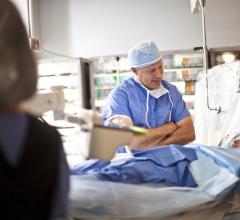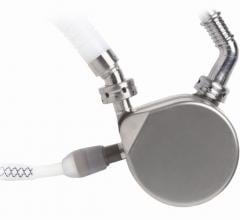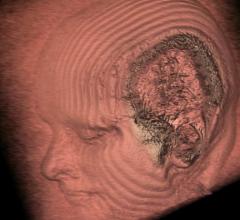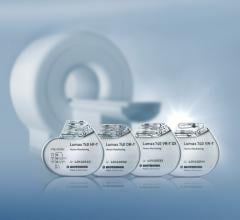Interview with James Min, M.D., Professor of Radiology and Medicine and Director of Dalio Institute of Cardiovascular ...
Interview with Harold Litt, M.D, Ph.D., chief of cardiovascular imaging section and associate professor of radiology ...
Interview with Daniel Berman, M.D., FACC, chief of cardiac imaging and nuclear cardiology and professor of imaging ...
Providing exceptional cardiovascular care for patients to achieve the best possible outcomes is the number one goal for ...
Interview with Dee Dee Wang, M.D., FACC, FASE, advanced structural heart imaging staff cardiologist, Henry Ford Hospital ...
Interview with Ricardo Cury, M.D., FAHA, FSCCT, FACC, president of the Society of Cardiovascular Computed Tomography ...
The global market value for bioabsorbable scaffolds (BAS) will expand rapidly from $143.7 million in 2014 to just under $2.1 billion by 2021, said research and consulting firm GlobalData. The surge will be driven primarily by new product approvals and a paradigm shift in the clinical treatment of vascular diseases towards minimally-invasive procedures.
Cardiac positron emission tomography (PET) is growing in popularity among cardiologists because it provides the ability ...
HeartWare expanded the Class I recall of its ventricular assist device in mid-June due to concerns over damaged or failing device components. The three mid-June recalls are part of a series of five alerts related to the HeartWare VAD dating back to April.
August 5, 2015 — Boehringer Ingelheim announced the first U.S. patients have been enrolled in two of the company's ...
Abbott announced Monday that it has entered into an agreement to purchase Tendyne Holdings Inc., a private medical device company focused on developing minimally invasive mitral valve replacement therapies. Under the terms of the agreement, Abbott will acquire the equity of Tendyne that it does not already own for $225 million upfront, resulting in a total transaction value of $250 million, plus potential future payments tied to regulatory milestones.
When performing radiofrequency (RF) ablation to treat cardiac arrhythmia, medical professionals must balance the safety ...
Over the past several years, advanced heart failure patients who have not responded to medical therapy have been given new hope, and are surviving longer with implanted left ventricular assist devices (LVADs). Although echocardiography is recommended for each phase of care for patients with LVADs, there has been limited published data and no formal guidance for the use of echocardiography in this growing patient population. In an effort to fill this gap, a new document, Echocardiography in the Management of Patients with Left Ventricular Assist Devices: Recommendations from the American Society of Echocardiography, will appear in the August 2015 issue of the Journal of the American Society of Echocardiography (JASE).
Triple therapy is no better than dual antiplatelet therapy in preventing major adverse cardiac events in older patients with atrial fibrillation who had a heart attack treated with angioplasty, according to a new study. The study, published in the Journal of the American College of Cardiology, also found that triple therapy resulted in more complications.
Jeff Zagoudis, associate editor of the Scranton Gillette Communications’ Healthcare Group publications Imaging ...
Change Healthcare Cardiology Hemodynamics is an integrated hemodynamic monitoring system for monitoring vital signs and ...
Specific cardiovascular risk factors are associated with smaller regional brain volumes that may be early indicators of Alzheimer’s disease and dementia, according to a study published online in the journal Radiology. Those factors include alcohol consumption, smoking, obesity and diabetes.
Biotronik announced CE approval of 3 Tesla (T) magnetic resonance imaging (MRI) scanning with exclusion zone for its two latest generations of pacemakers. The company now offers both implantable cardioverter-defibrillators (ICDs) and pacemakers approved for 3T scans.
Sunshine Heart announced plans to commence a first-in-human study using its novel C-Pulse transcutaneous energy transmission (TET) system and a new, smaller implantable pump in quarter three 2016.


 August 05, 2015
August 05, 2015







